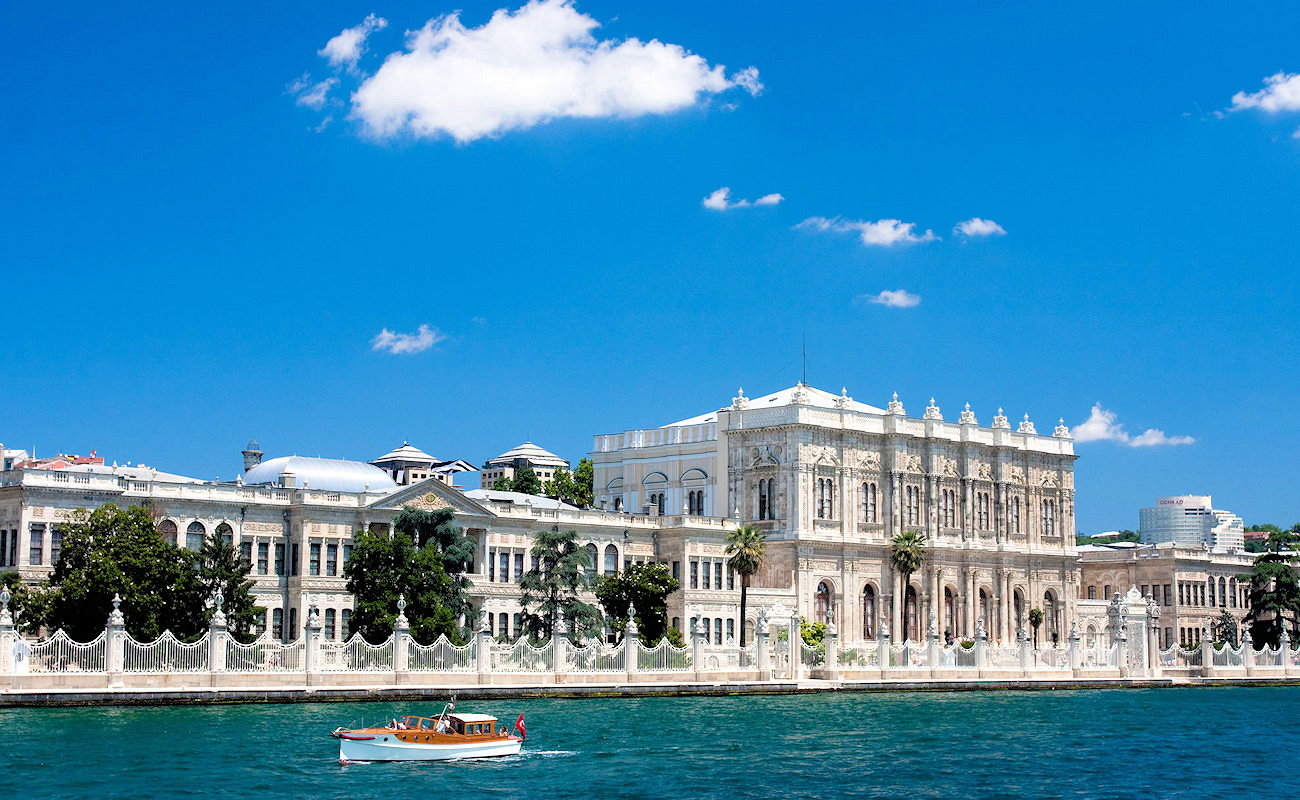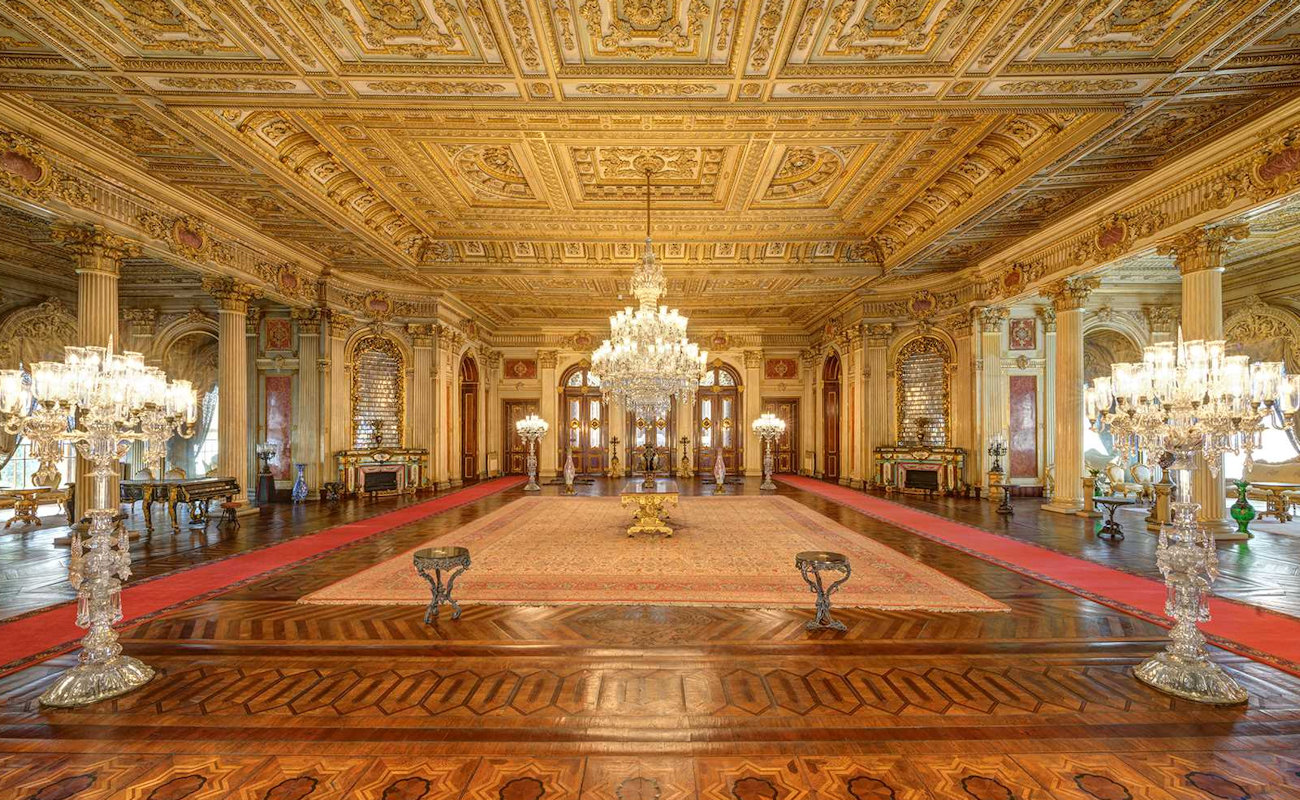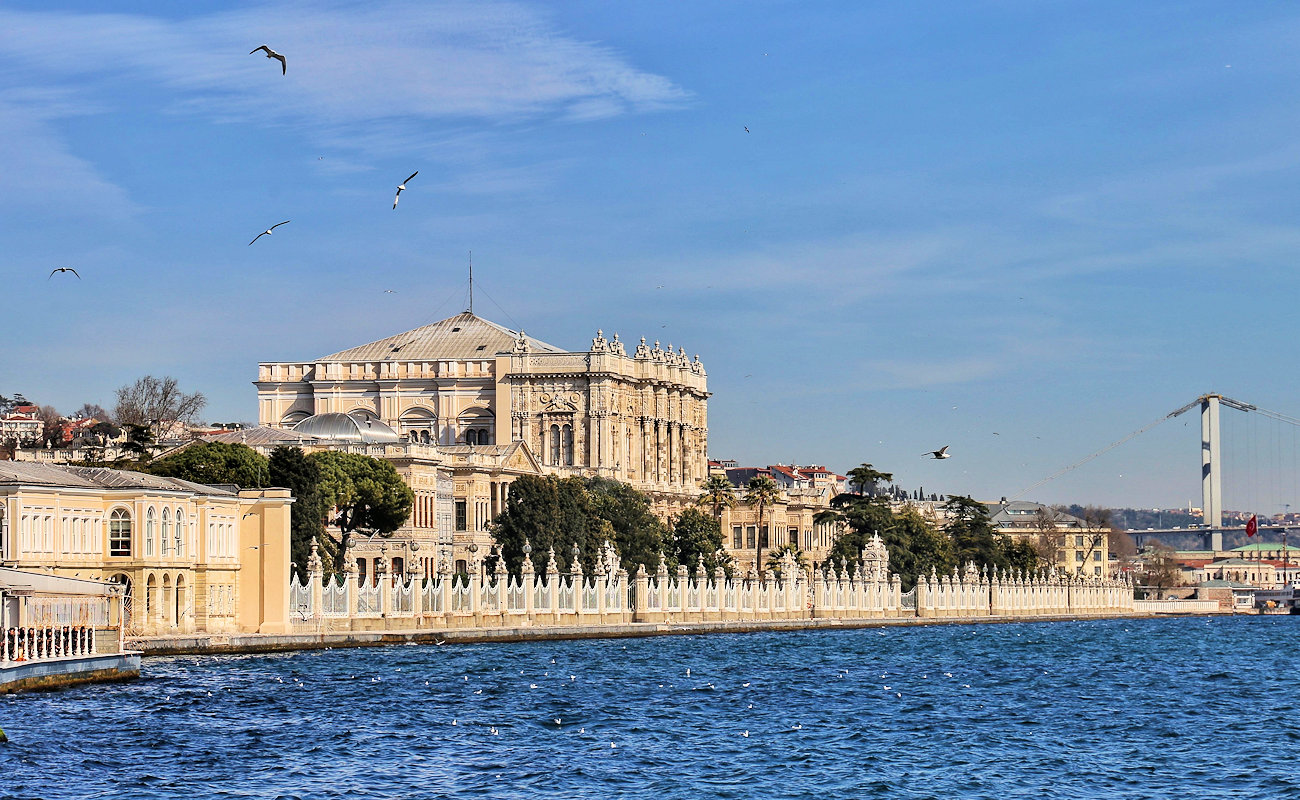
Dolmabahce Palace
Dolmabahce Palace, situated in the Beşiktaş region of Istanbul, Turkey, on the European bank of the Bosporus strait, functioned as the primary administrative hub of the Ottoman Empire between 1856 and 1887, as well as from 1909 to 1922 (with Yildiz Palace serving as an interim place). The palace, or Dolmabahce Palace, as it’s known in Turkish (Dolmabahçe Sarayı), served this purpose for a significant period during the empire’s history.
Dolmabahce Palace History
Dolmabahce Palace was commissioned by the 31st Sultan of the Ottoman Empire, Abdülmecid I, between 1843 and 1856. Before this, the Sultan and his family resided in Topkapı Palace. However, as Topkapı was considered outdated and lacked the modern comforts and luxury found in the palaces of European monarchs, Abdülmecid decided to construct a contemporary palace in the vicinity of the former Beşiktaş Sahil Palace, which had previously been demolished. Hacı Said Ağa oversaw the construction of the Selamlık, which was carried out by architects from the Armenian Balyan family who were Garabet Balyan, his son Nigoğayos Balyan, and Evanis Kalfa.
The construction cost five million Ottoman gold lira, equivalent to about 35 tonnes of gold, which is approximately $1.9 billion in today’s (2021) gold values. This sum accounted for roughly a quarter of the yearly tax revenue. Actually, the construction was funded through debasement, massive issuance of paper money, and foreign loans. The significant expenses burdened the state purse and contributed to the decline of the financial situation of the Ottoman Empire. Subsequently, the Empire defaulted on its public debt in October 1875. As a result, the European powers took control of the “sick man of Europe,” establishing financial control in 1881.

The palace housed six Sultans between 1856, when it was first occupied, and the abolishment of the Caliphate in 1924. The final monarch to reside in the palace was Caliph Abdülmecid Efendi. On March 3, 1924, a law was passed which made the palace a national heritage site of the new Turkish Republic.[4] The palace was used as a presidential residence during the summers by Mustafa Kemal Atatürk, the founder and first President of the Republic of Turkey, and he completed some of his most important work here. Atatürk was resident in the palace during his final days of treatment and ultimately died there on November 10, 1938.
Today, the Milli Saraylar Daire Başkanlığı (Directorate of National Palaces), responsible to the Grand National Assembly of Turkey, manages the palace.
Design and layout
Dolmabahce stands as the biggest palace in Turkey, covering an area of 45,000 m2 (11.1 acres) and accommodating 285 rooms, 46 halls, 6 hamams, and 68 lavatories.[5][6] The design merges
Baroque, Rococo, and Neoclassical styles with traditional Ottoman architecture, creating a fresh amalgam. The palace’s layout and embellishments mirror the rising impact of European styles and norms on Ottoman culture and art during the Tanzimat epoch. The palace’s exterior displays a classical European two-wing arrangement with a large avant-corps and two side avant-corps, offering a breathtaking view of the Bosporus.
In terms of function, the palace preserves elements of traditional Ottoman palace life and traditional Turkish homes. The residence is strictly divided into two wings, a southern wing (known as Mabeyn-i Hümâyûn or Selamlık, designated for the men and containing the public representation rooms) and a northern wing (known as Harem-i Hümâyûn or the Harem, serving as the private residential area for the Sultan and his family).
These two functional areas are separated by a large Ceremonial Hall (Muayede Salonu) with a 2,000 m2 (22,000 sq ft) floor area and a 36 m (118 ft) high dome. As the harem needed to be entirely separated from the outside world, the primary entrance for visitors is situated on the narrow southern side. Here, the reception rooms are organized to receive visitors and foreign diplomats. The harem zone comprises eight interconnected flats for the sultan’s wives, favorites, concubines, and mother, each equipped with their own bathroom.

Décor and equipment
While the Topkapi Palace showcases stunning instances of Iznik tiles and Ottoman carving, the Dolmabahce Palace is heavily adorned with gold and crystal. It took fourteen tonnes of gold to create the ceiling gilding and over 100 kg of gold[8] to embellish the palace, which is worth US$6 million in current times.
The Ceremonial Hall boasts the world’s largest Bohemian crystal chandelier, weighing 4.5 tonnes and comprising of 750 lamps. The chandelier was originally believed to have been a gift from Queen Victoria.
Nevertheless, in 2006, researchers found a receipt indicating that the Sultan had paid for it in full.[9] Dolmabahce boasts the world’s most significant collection of Bohemian and Baccarat crystal chandeliers. The renowned Crystal Staircase, made of Baccarat crystal, brass, and mahogany, has a double horseshoe shape.
Expensive materials, including Marmara (Proconnesian) marble, Egyptian alabaster (calcite, otherwise known as onyx-marble), and Porphyry from Pergamon, were utilised for decor.
The palace boasts a vast collection of Hereke palace carpets produced by the Hereke Imperial Factory. The largest Hereke rug[8] in the world is also situated within the main hall. In addition, 150-year-old bearskin rugs gifted to the Sultan by Tsar Nicholas I are also displayed.
A display of 202 oil paintings is exhibited within the palace. One of the remarkable features of the collection comprises 23 paintings, painted by Ivan Aivazovsky, during his stay in Istanbul as a court painter.[10] Furthermore, the collection consists of works by Gustave Boulanger, Jean-Léon Gérôme, Eugène Fromentin, Stanisław Chlebowski, Félix Ziem, Karl Joseph Kuwasseg, Fausto Zonaro, Théo van Rysselberghe, and Alexander Sandor Svoboda. Paintings by Turkish artists like Osman Hamdi Bey, Halil Pasha, and Osman Nuri Pasha are also displayed at this museum.
The palace’s equipment was integrated with the highest technical standards from the outset. At that time, unlike other palaces in continental Europe, gas lighting and water-closets were imported from Great Britain. Subsequently, an elevator, electricity, and a central heating system were installed.
Dolmabahce Palace Rooms
Medhal (Main Entrance) Hall
A tour of Dolmabahce Palace commences in the Medhal Hall, from where corridors extend towards the sea and the land. Seaward-facing chambers were historically reserved for eminent Ottoman dignitaries including the Grand Vizier and other governmental department heads, whereas those with a landward vista were chiefly allocated to palace and state officials spanning Palace Marshall, Şeyhülislam, as well as members of the House of Representatives (Meclis-i Mebusan) and the Senate (Meclis-i Ayan).
Guests will first be asked to wait in this hall and will then be escorted inside at the appropriate time by a palace protocol officer. On entering the Medhal, visitors will observe Boulle tables on both sides of the room, adorned with the monogram of Sultan Abdülmecid. The royal monogram of the sultan can also be found on the fireplace. The English chandelier, which is situated in the centre of the room, has sixty arms. The furnishings and drapes are fashioned from Hereke fabrics in the royal hue of red.
The secretariat’s rooms
The Tiled Room, also known as the Clerk’s Hall, is located to the right of the Medhal, and it is the second room from there. Displayed in this hall is the largest painting from the palace collection, Stefano Ussi’s Surre Procession, which hangs on the left wall. During the religious month of Recep, caravans known as “Surre” travelled from Istanbul to Mecca. These caravans carried monetary aid to support the maintenance and decoration of the Kaaba, as well as provide financial assistance to the local population of Hejaz.
At Atatürk’s deathbed, a painting by Rudolf Ernst depicting the fire at the Paris Municipal Theater is hung on the wall to the right.
At Atatürk’s deathbed, a painting by Rudolf Ernst depicting the fire at the Paris Municipal Theater is hung on the wall to the right. At Atatürk’s deathbed, a painting by Rudolf Ernst depicting the fire at the Paris Municipal Theater is hung on the wall to the right. Additionally, there is a painting of a Dutch Village Girl by Delandre. The room is decorated with French style furniture and contains valuable porcelain vases.
Atatürk’s room
Mustafa Kemal Atatürk spent his final days at the palace as his health declined. He passed away at 9:05 A.M. on November 10, 1938, in a bedroom situated in the former harem area of the palace. All of the palace clocks were halted and reset to 9:05 following his demise. The clocks outside of his room are now adjusted to the current time in Turkey, but the clock in the room where he expired is still set to 9:05.
Harem
The harem has been a prevalent characteristic of numerous Middle Eastern architectural sites throughout history. Abdulmecid constructed the harem to provide exclusive quarters for the Royal family’s leisure. The Sultan’s personal concubines usually resided in the harem. The harem’s chambers were designated to accommodate and instruct the Sultan’s children, including his own private living quarters.
Typically, previous Sultans had limited their wives and concubines from being seen in public. Nevertheless, Abdulmecid made an unprecedented decision to allow them to leave the palace under supervision and go to stores and bazaars.
